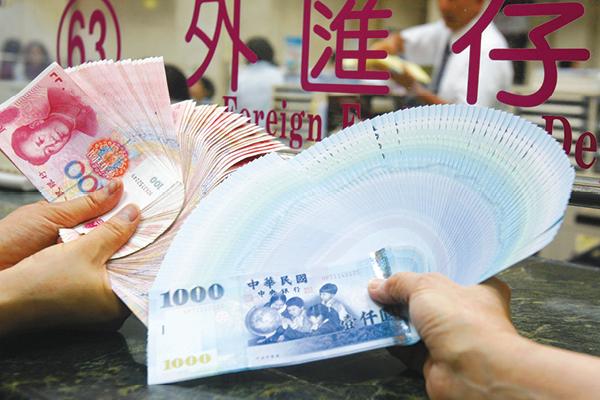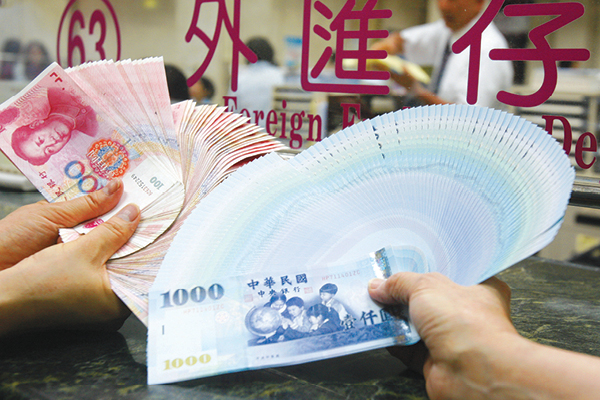
Antitrust law enforcement activity is on the rise in Asia, as local authorities seek to clamp down on anti-competitive behaviour. This is also true in Taiwan, where a recent amendment to its Fair Trade Act laid out a new path for key areas of competition law and transformed the country’s business landscape. Kanishk Verghese reports
Taiwan’s amended Fair Trade Act (TFTA) came into effect in February, bringing with it some of the biggest changes to the Act since its inception in 1992. The amendments, which focus primarily on merger control, cartel enforcement and unfair competition, have changed the way business is conducted in Taiwan. But while the legal community has welcomed the reforms, it has also pointed out areas where further fine-tuning is needed.
Some of the TFTA’s most significant reforms have been in the area of merger control, lawyers say. Firstly, the assessment of whether a company needs to file a pre-merger notification with the Taiwan Fair Trade Commission (TFTC) has been broadened to include the company’s controlling entity, affiliates and any brother and sister companies under common control. Secondly, in Taiwan, where it is common for businesses to be controlled by a single person or noncorporate entities, individuals can now be defined as a party to a merger and subjected to pre-merger filing requirements.
Lawyers point out, however, that some grey areas remain. For example, the TFTC uses a market share ratio and a turnover ratio when conducting its merger control assessments. The amended TFTA features a new clause stating that when calculating the turnover threshold, the total turnover of the party, as well as its group companies, has to be included, says Dr. Matt Liu, a partner at Taiwanese law firm Tsar & Tsai.
The TFTC had proposed to remove the market share threshold from the assessment, but Taiwan’s Legislative Yuan rejected the proposal, much to the surprise of the TFTC and the legal industry. As a result, calculating the market share threshold has become a difficult task, as the new clause applies only to the turnover threshold, explains Liu. “This gives rise to the question of when calculating the market share threshold, do we consider the market share of all the group companies, or just the entity that is a party to the merger? We have received different opinions from the TFTC officials on this issue, so it is not very clear. The TFTC has to issue a ruling making this clear,” he says.
Back to topSHIFTING THE BURDEN OF PROOF
The updated TFTA also contains enhanced measures to help the TFTC combat cartels. These include larger administration fines for antitrust violations, an extension of the statute of limitations for conducting investigations from three years to five years, a direct appeal process to the Administrative Court, and the introduction of a suspension and termination system.
Another significant amendment allows the TFTC to presume the existence of collusion between competitors based on its assessment of market conditions, product or service characteristics, and cost analyses. Prior to the amendment, the burden of proof lay with the TFTC to demonstrate the existence of a cartel agreement among competitors. The new TFTA shifts the burden of proof to the accused parties. “The change was made because the TFTC recently lost some cartel enforcement cases in court, which ruled that that the TFTC failed to fulfil its burden of proof. The new amendment gives the TFTC a more powerful weapon for cartel enforcement, and puts them in a better position to win those cases,” says Stephen Wu, a partner and head of the competition law practice group at Lee and Li.
The business community and some lawyers have criticised the cartel enforcement amendment, citing its lack of economic foundation and potential to create situations where accused parties are seen as guilty of price collusion until proven innocent. “Companies now face a difficulty. If you increase your price, and a competitor increases their price at almost the same time, then the TFTC can assume that you are conducting a cartel, unless you can prove your decision is justifiable based on actual cost analysis or other documents convincing enough to show that the decision was made without any coordination among competitors,” says Wu. “Other jurisdictions like the U.S. and the EU have this assumption, but their competition agencies, instead of the accused parties, are required to prove both economic evidence and behavioural evidence,” he adds.
For his part, Tsar & Tsai’s Liu says that even though the burden of proof has been shifted to the companies, the TFTC still needs reasonable grounds to presume the existence of a cartel. “It will be interesting to observe how stringent the court will be on requiring the TFTC to prove the reasonableness of their indirect evidence, and whether the court will change the standard of burden of proof in the future. There is room for a company to argue that the indirect evidence the TFTC puts forward is insufficient, so I don’t think the TFTC will always prevail, even under the new provision,” says Liu.
Furthermore, the TFTC’s powers remain limited after the Legislative Yuan rejected a proposal to grant the Commission the right to conduct dawn raids. “I thought the dawn raid proposal would be passed by the legislature. When you look at international practices, dawn raids are a very important weapon for agencies to conduct cartel enforcement,” says Liu. “In Taiwan, we only have a leniency programme. But if you don’t have search and seizure power, it is not very useful because when you have only one leniency applicant and the other companies deny their conduct and are uncooperative, it is very difficult for the TFTC to collect sufficient evidence to prove the existence of a cartel,” adds Liu. It is highly likely that the proposal for dawn raids will be a top priority when the next round of amendments is tabled, which could be in another three to five years.
However, the TFTC is set to gain another advantage. In June, four months after the amended TFTA took effect, the Legislative Yuan passed a new provision requiring the TFTC to set aside 35 percent of the money it receives from fines and penalties for a ‘whistleblower reward fund’. The fund will create a financial incentive for companies, employees or insiders to come forward with information on anti-competitive behaviour. “With the whistleblower reward soon to be in place, businesses should regularly conduct internal investigations. Otherwise, they could be exposed to the risk of employees providing information and acting as government witnesses against the company,” says Liu.
Back to topSTRENGTHENING INTERNAL CONTROLS
With companies in Taiwan now exposed to whistleblowers and tasked with shouldering the burden of proof in cartel enforcement cases, lawyers advise businesses to keep detailed and transparent records, particularly of their internal pricing procedures. “Most companies deem their cost analyses as highly confidential information and are reluctant to disclose that information to the TFTC. Now that the law has changed, I urge companies to prepare a detailed cost analysis before increasing the price of their good or service, and provide this documentation at the very beginning if the TFTC decides to investigate,” advises Wu.
While the amended TFTA has enhanced Taiwan’s competition regime, companies need to pay special attention to the new merger control requirements, and carefully document their pricing strategies and cost analyses to avoid getting ensnared in a TFTC investigation. Businesses should also look to future court decisions on cartel cases under the new TFTA for further clarity. With the onus now on the companies to justify their pricing strategies, will the TFTC consistently prevail in these cases? Only time will tell.
Back to topA TALE OF TWO CASES
Prior to the amendment of the TFTA, the onus was on the TFTC to demonstrate the existence of collusive pricing between competitors. But with the new TFTA, the burden of proof now lies with the accused parties. Lawyers say the amendment was proposed and passed because in recent years, some key court decisions have gone against the TFTC.
A widely reported example is the ‘Coffee Case’. In November 2011, the TFTC fined four major convenience store chains in Taiwan for jointly raising the price of their freshly brewed coffee by NT$5 ($0.16) during the same week. The identical amounts and timing of the increases suggested that there was a collusive agreement, or a “meeting of the minds”, among the chains, claimed the TFTC.
However, the Supreme Administrative Court decided in April 2014 that the price hikes could be explained by ‘conscious parallel pricing’ or ‘the act of price following’. “The TFTC was unable to prove that there was a cartel agreement in place. Since the burden proof was on the TFTC, it failed to prove its case, and therefore lost the case,” says Stephen Wu, a partner and head of the competition law practice group at Lee and Li. Another case that drew media attention is the ‘Milk Case’. In October 2011, the TFTC slapped three major dairy producers in Taiwan with administrative fines for simultaneously raising the price of fresh milk by NT$6 per litre. The TFTC asserted that it was impossible for this to have taken place without collusion, and that the inelastic demand for fresh milk as well as the three producers’ combined market share provided an added incentive to collude.
Throughout the investigation, the accused parties did not provide sufficient evidence to prove that no price collusion had occurred. Interestingly, although the TFTC found no direct evidence of a meeting of the minds, it won the case. “Given the similarity between the Coffee Case and the Milk Case, the lawmakers and the media questioned how the TFTC won one case and lost the other,” says Wu. “As a result, they decided to change the law to shift the burden of proof to the accused parties, and to equip the TFTC with a more powerful weapon so in the future it can win both of these types of cases.”
Back to top